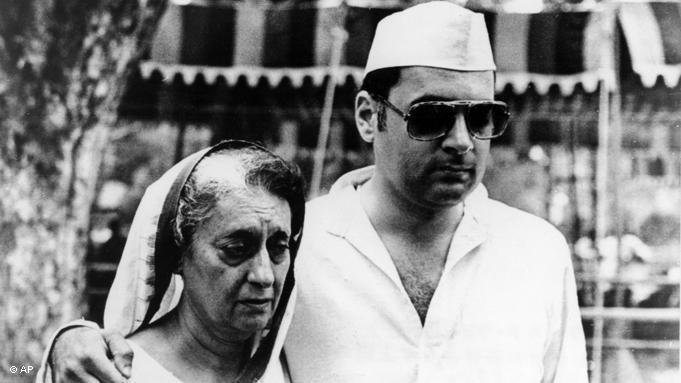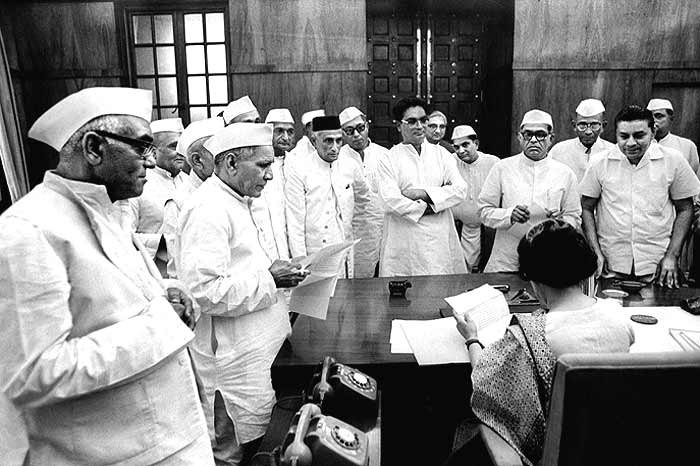Her puja room at home was a tumult of varied divinities. There was Christ, the Buddha, Ramakrishna Paramahamsa, the Mother of Pondicherry, a conch shell and a brass plate with diyas. India’s wisdom and religiosity sprang from a common sacred source and was encapsulated in the arts and crafts she patronized and showcased internationally. She recognized that India’s artistic and craft traditions had developed from within the realm of the sacred. She promoted the Festivals of India, a celebration of India’s culture, in the west, where inevitably the spiritual moorings of Indian arts were on display at the world’s best and most prestigious museums and galleries. So much of the creative exploration of the artisan, the musician and the painter was an exploration of paths towards the divine and she saw the links between the sacred and the aesthetic. Vedic chants were as much art as they were religion, the rescue and preservation of India’s genius from the annihilating tread of imperialism was both religious instinct and aesthetic inclination. The arts were her own rediscovery of India, a rediscovery she wanted to share with the world.
The following is an excerpt from ‘Indira: India’s Most Powerful Prime Minister’ by journalist Sagarika Ghose.

‘What does one seek from art?’ she would ask. ‘A few hours of pleasure or an experience which has the seed of timelessness that touches one’s innermost self?’ She could say about art what she couldn’t say openly about religion. Art was heritage and heritage was also religion and hers was the proud defence of a modern nation with an ancient heritage. Intensely religious as she was, not above using religion and religious platforms in political campaigns as in Kashmir and Punjab, Indira Gandhi’s religiosity was cultural and ritualistic rather than any spiritual, other-worldly yearning. She turned to religion as a superstitious enabler of good luck in politics. However inspired she may have been by her mother, hers was no Kamala Nehru–type attachment to a pious life. For her, religion was an extension of culture, expressed through art and decorations. On Basant Panchami she would wear yellow saris and instruct her mali to arrange yellow flowers around the house. At Nehru’s funeral, she took special care that the most melodious kirtans were sung.
In 1948, when she insisted that they move into Teen Murti House very early in the morning, Nehru explained in a letter to Vijayalakshmi Pandit: ‘[the timing was] a sudden urge of Indu to come at an auspicious moment. A holy gentleman in Uttar Kashi, who apparently takes an interest in my career, sent word about the auspicious moment. Indu felt it would be unwise to challenge fate.’* Did she fall short here of the paternal ideals of the scientific temper? Nehru’s tone is indulgent yet gently mocking. Indira’s secularism was flawed, not because she didn’t believe in it, but because she was unable to reconcile or balance her public and private lives. A private life of religiosity contrasted with a constitutional distancing from religion in public was a balancing act she did not quite pull off . She was unable to reconcile this duality into a personal philosophy on the one hand and the needs of practical governance on the other. She went out of her way to show she embraced all India’s faiths, yet used one religion against another as a tactical political ploy without realizing the massive cost this would impose.

Embarrassed about, yet drawn to, religion and not quite clear how to uphold a real secularism except in appointing Muslims to high office, Indira Gandhi consigned the Congress to a future of confused secularism, of alternative uses of the ‘Hindu card’ and ‘Muslim card’. The Congress remains a party that failed to develop a modern blueprint for how a secular state should function in a religious land. She said in an interview, ‘religion has an important place in our culture and society. It has no place in our politics . . .our secularism doesn’t mean opposition to religion, it means all religions will receive equal recognition. Th e idea of an established religion or a government authorized by religion is abhorrent.’* But a truly secular politician would eschew public displays of religiosity.
Her failure to properly define this duality had resulted in the Congress still struggling to find its way out of the ‘secular’ cul-desac. The party has failed to emerge as a modernizing, progressive force for all religions. She constantly pointed to the dangers of the RSS, yet dabbled in Hindu politics herself, as we have seen, during the communal riots in the 1980s and in her handling of the crisis in Punjab. Th is showed a helplessness, a lack of inner conviction against the ideological challenge posed by rising Hindu political mobilization throughout her political life.
The book is published by Juggernaut Books.

















